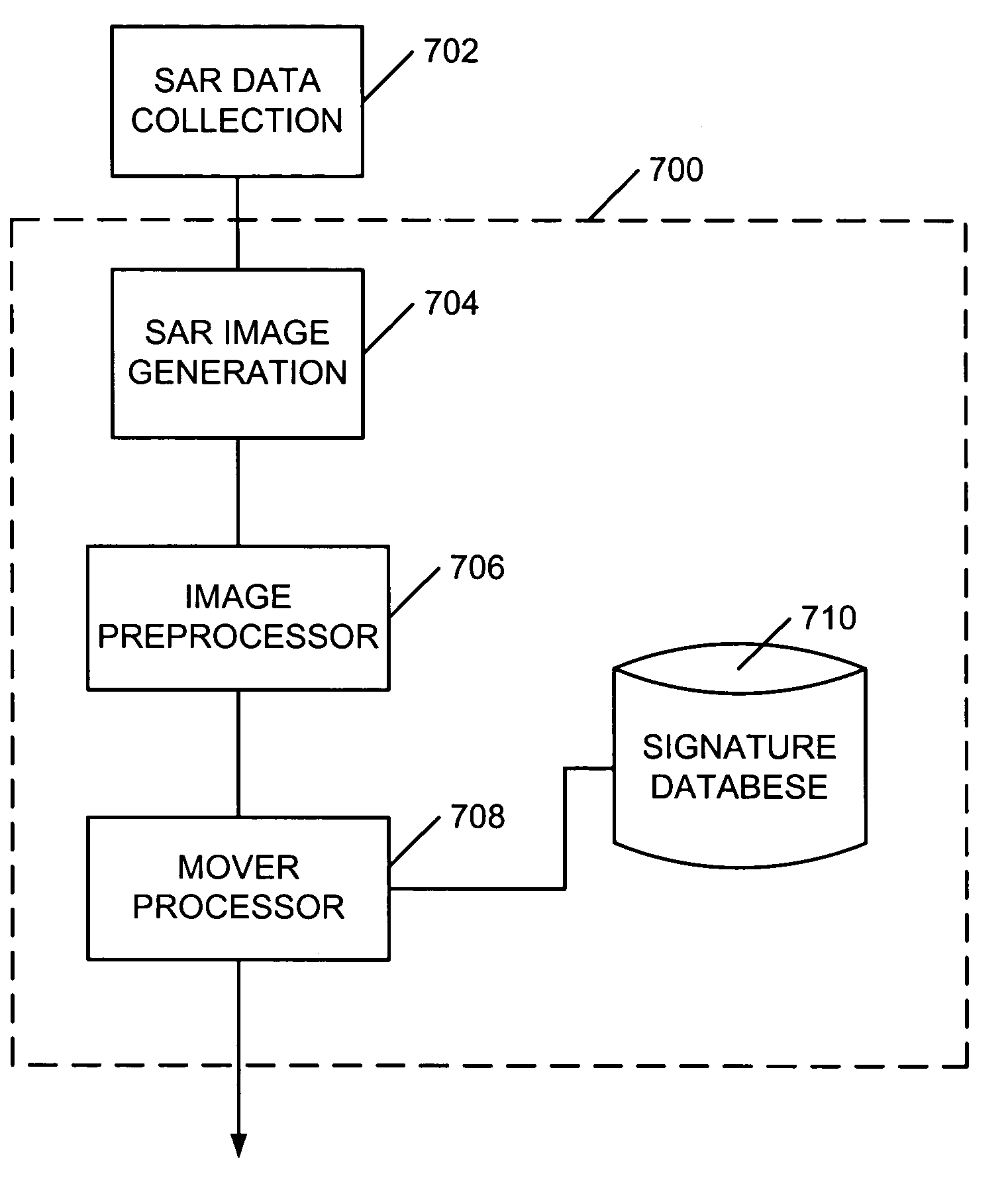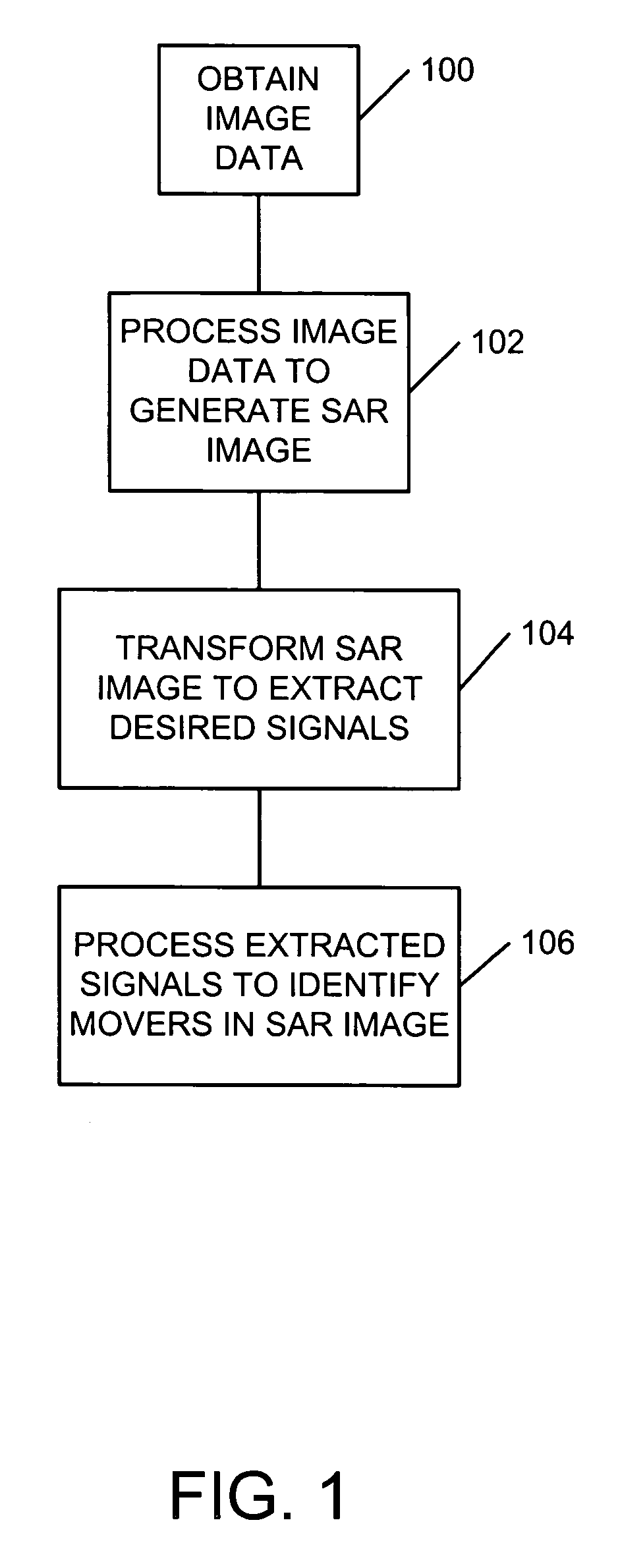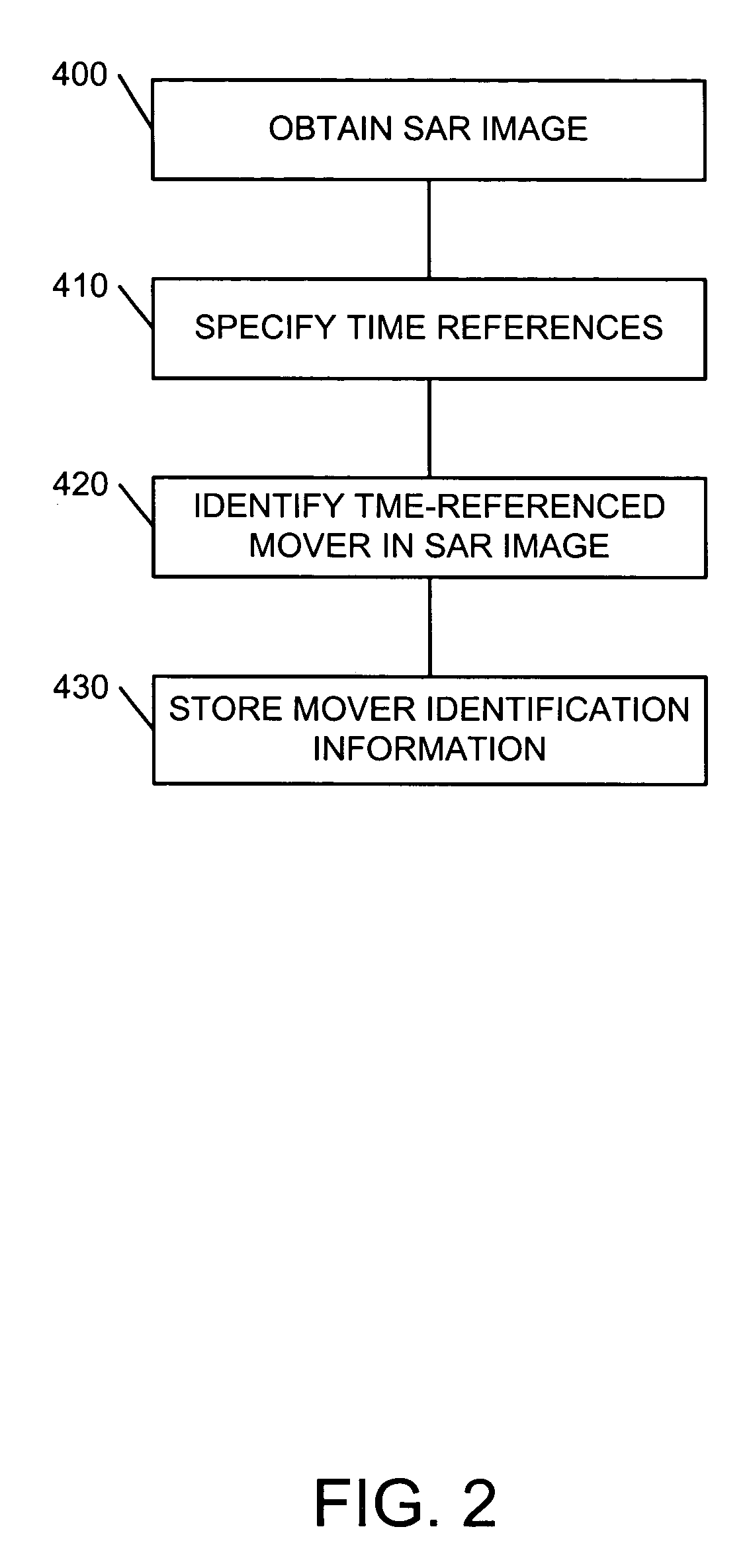Identification and tracking of moving objects in detected synthetic aperture imagery
a technology of synthetic aperture and detection image, applied in the field of synthetic aperture imagery, can solve the problems of limiting the resolution of angle coordinate, moving objects may not be visible in traditional sar imagery, drawbacks encountered, etc., and achieve the effect of reducing the amount of processing and reducing the corresponding processing tim
- Summary
- Abstract
- Description
- Claims
- Application Information
AI Technical Summary
Benefits of technology
Problems solved by technology
Method used
Image
Examples
Embodiment Construction
[0039]FIGS. 1–9 illustrate various features of the method and system of the present invention. Generally, the method and system of the present invention are directed to processing image data relating to images collected by a synthetic aperture radar imaging system that may use real and / or complex image data to detect and / or classify a cultural object and / or a replicated object. The method and system of the present invention are particularly useful for detecting and / or tracking moving objects. For example, a method and system of the present invention may be used to detect and / or track moving objects that are not readily visible in an image or that are moving at a high rate of speed. The present method uses SAR image formation for describing the signature of a moving object in order to identify what the given inputs actually represent.
[0040]Referring to FIG. 1, disclosed therein is a method for processing synthetic aperture radar (SAR) data so as to perform one or more functions which...
PUM
 Login to View More
Login to View More Abstract
Description
Claims
Application Information
 Login to View More
Login to View More - R&D
- Intellectual Property
- Life Sciences
- Materials
- Tech Scout
- Unparalleled Data Quality
- Higher Quality Content
- 60% Fewer Hallucinations
Browse by: Latest US Patents, China's latest patents, Technical Efficacy Thesaurus, Application Domain, Technology Topic, Popular Technical Reports.
© 2025 PatSnap. All rights reserved.Legal|Privacy policy|Modern Slavery Act Transparency Statement|Sitemap|About US| Contact US: help@patsnap.com



